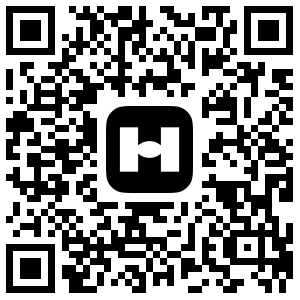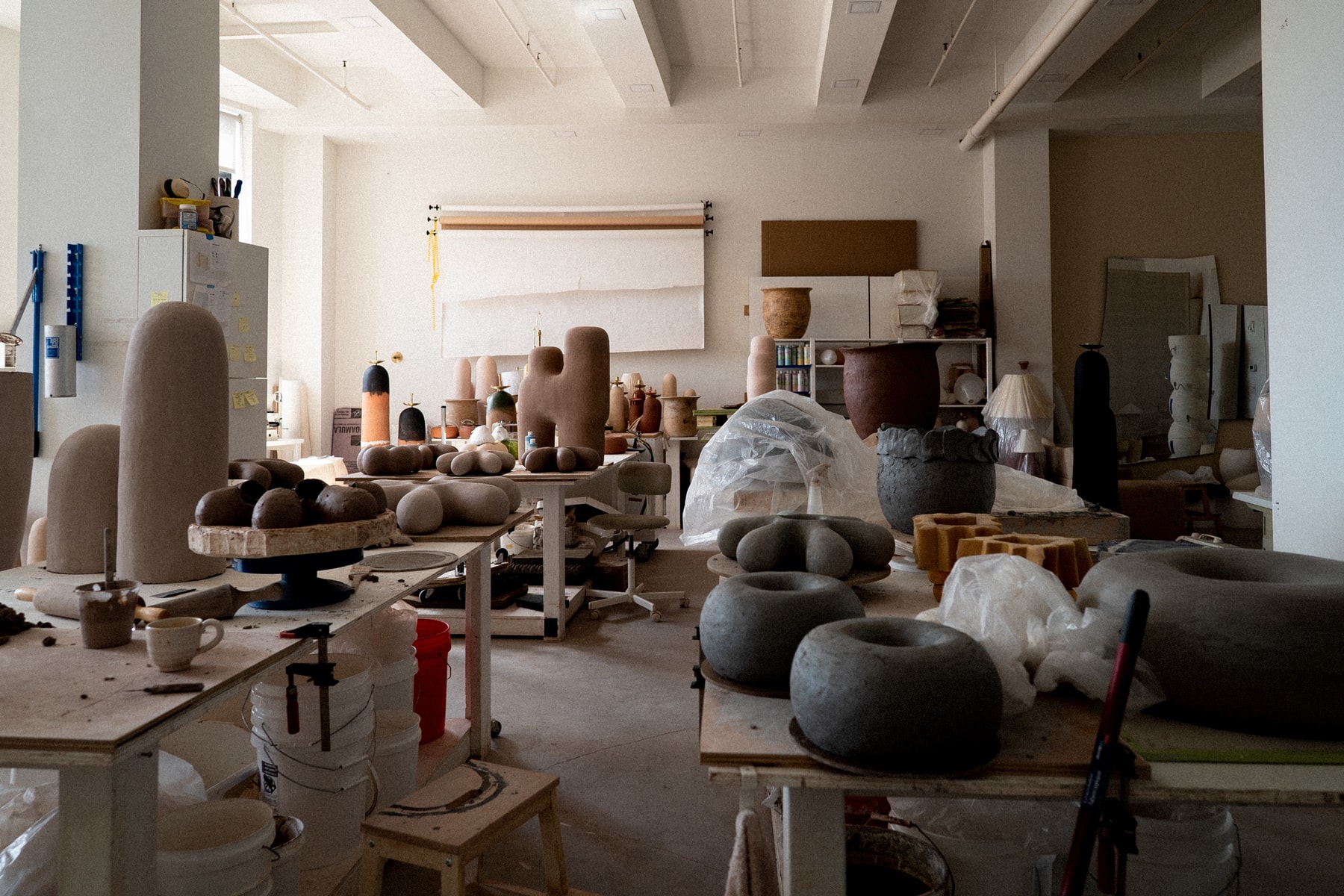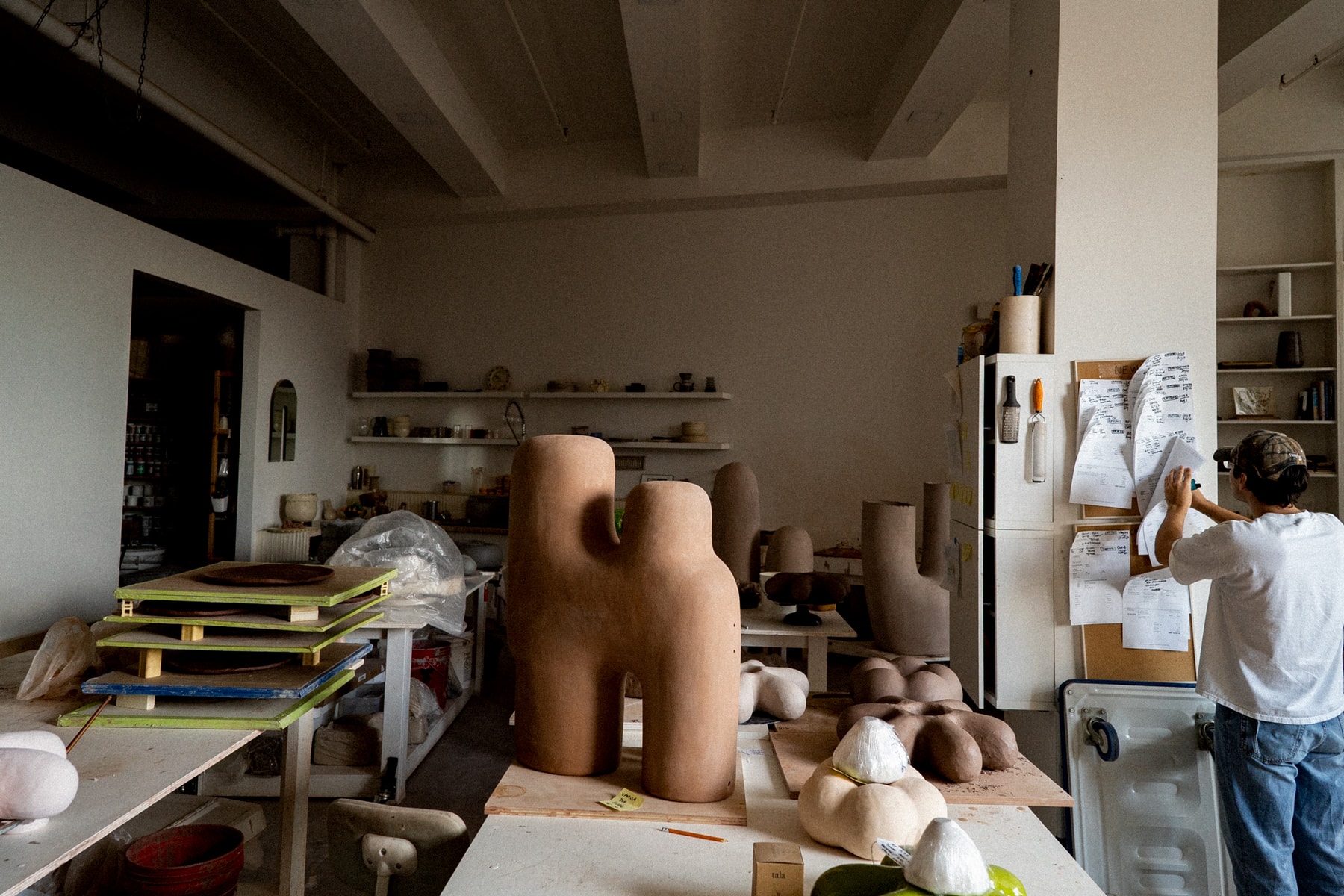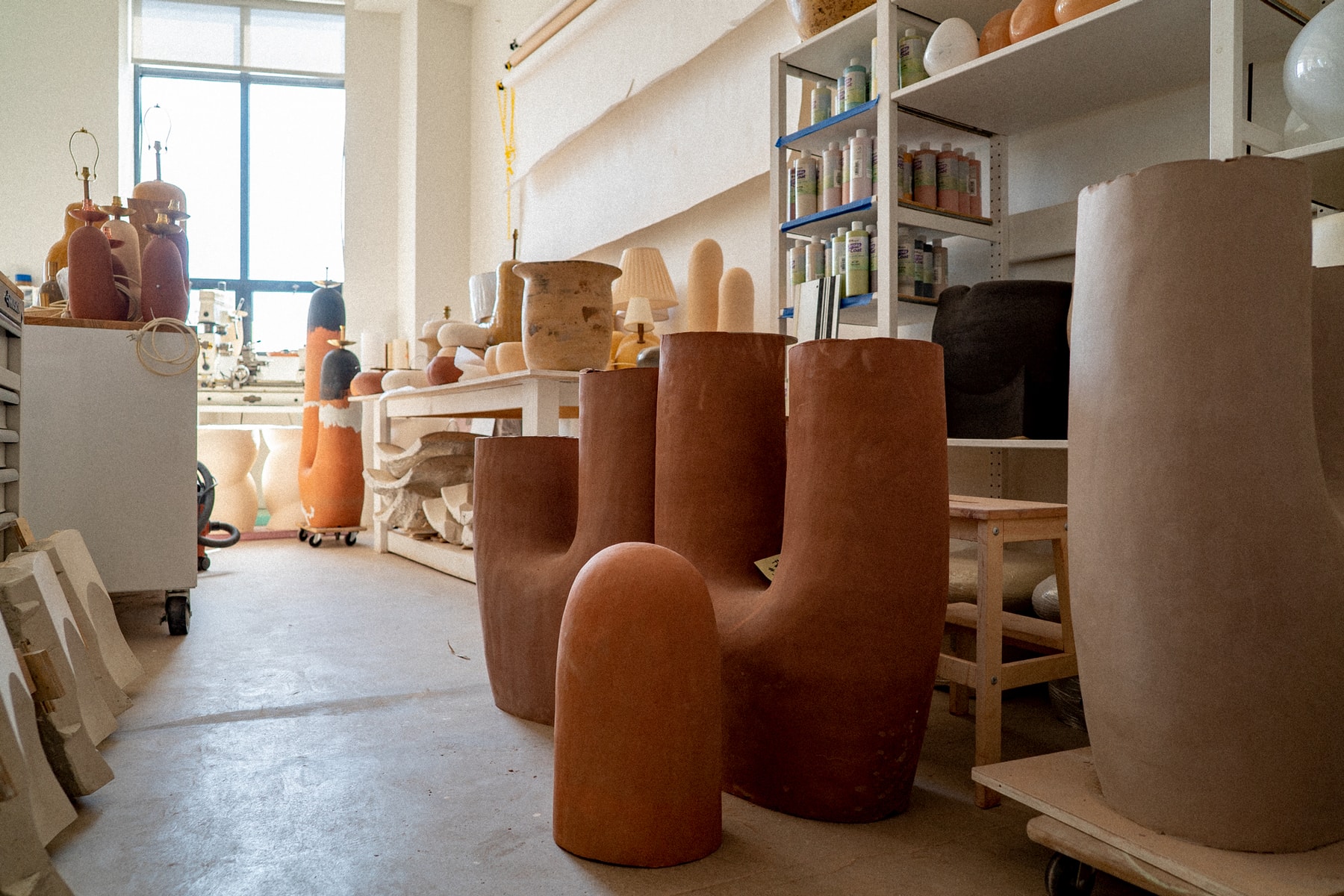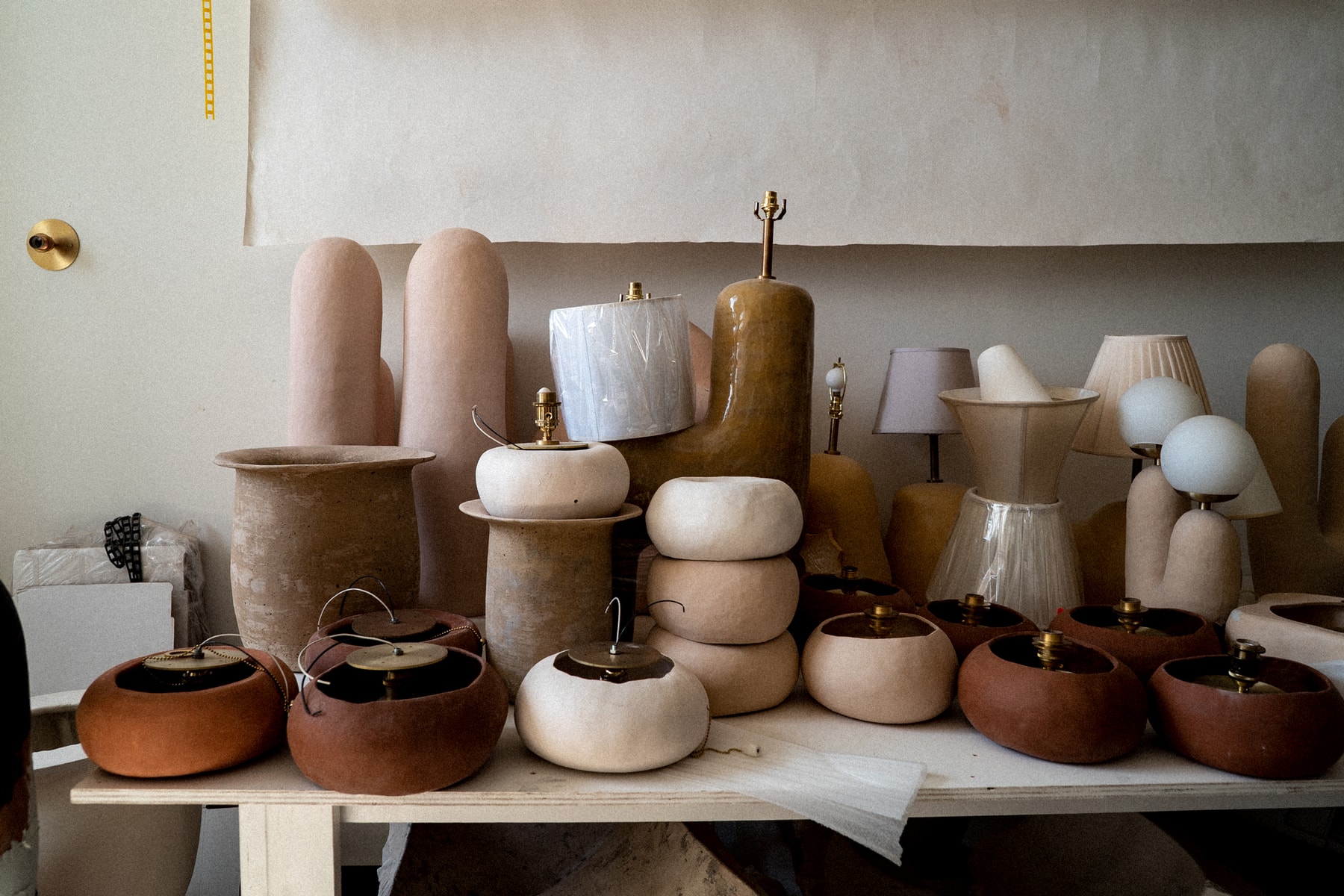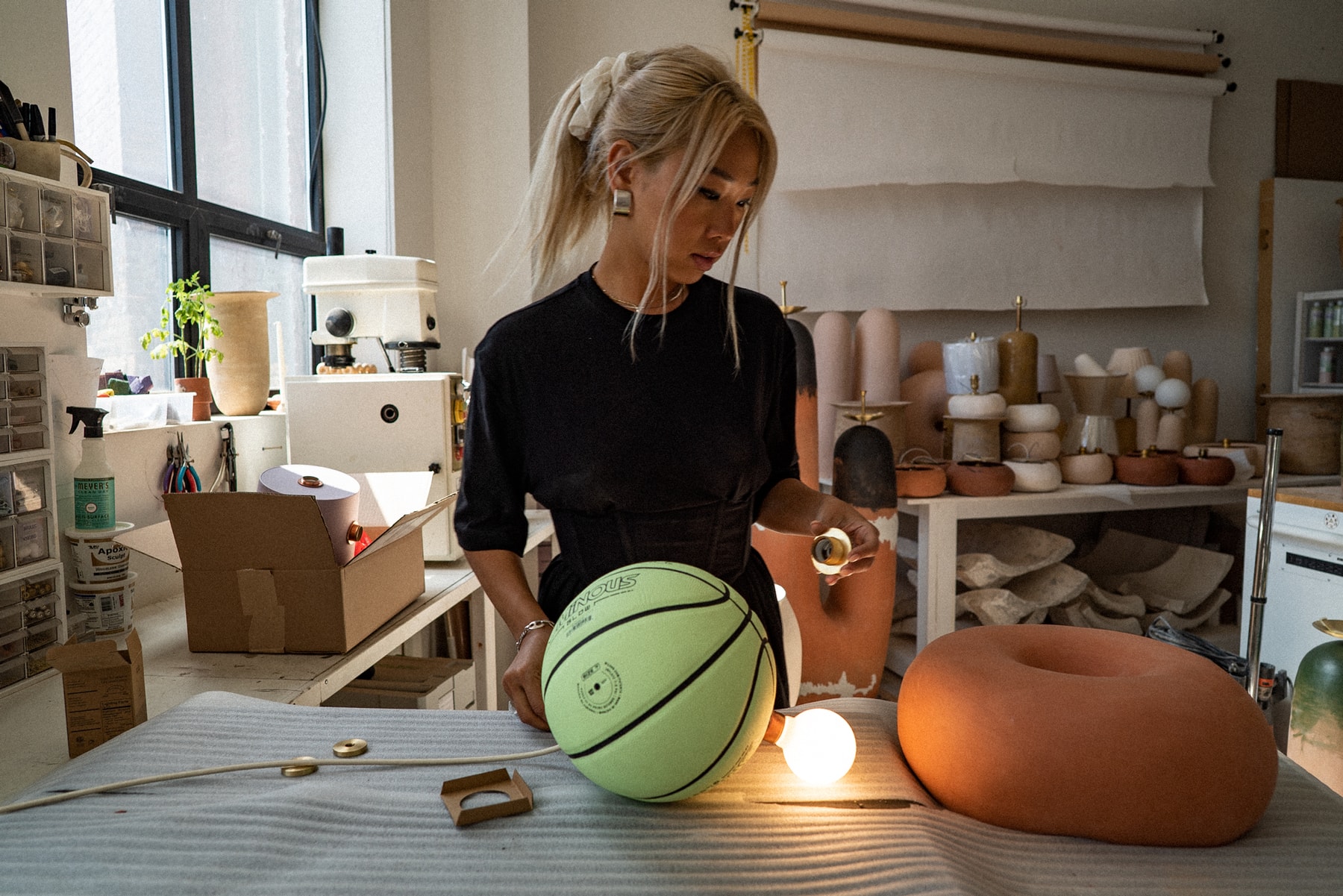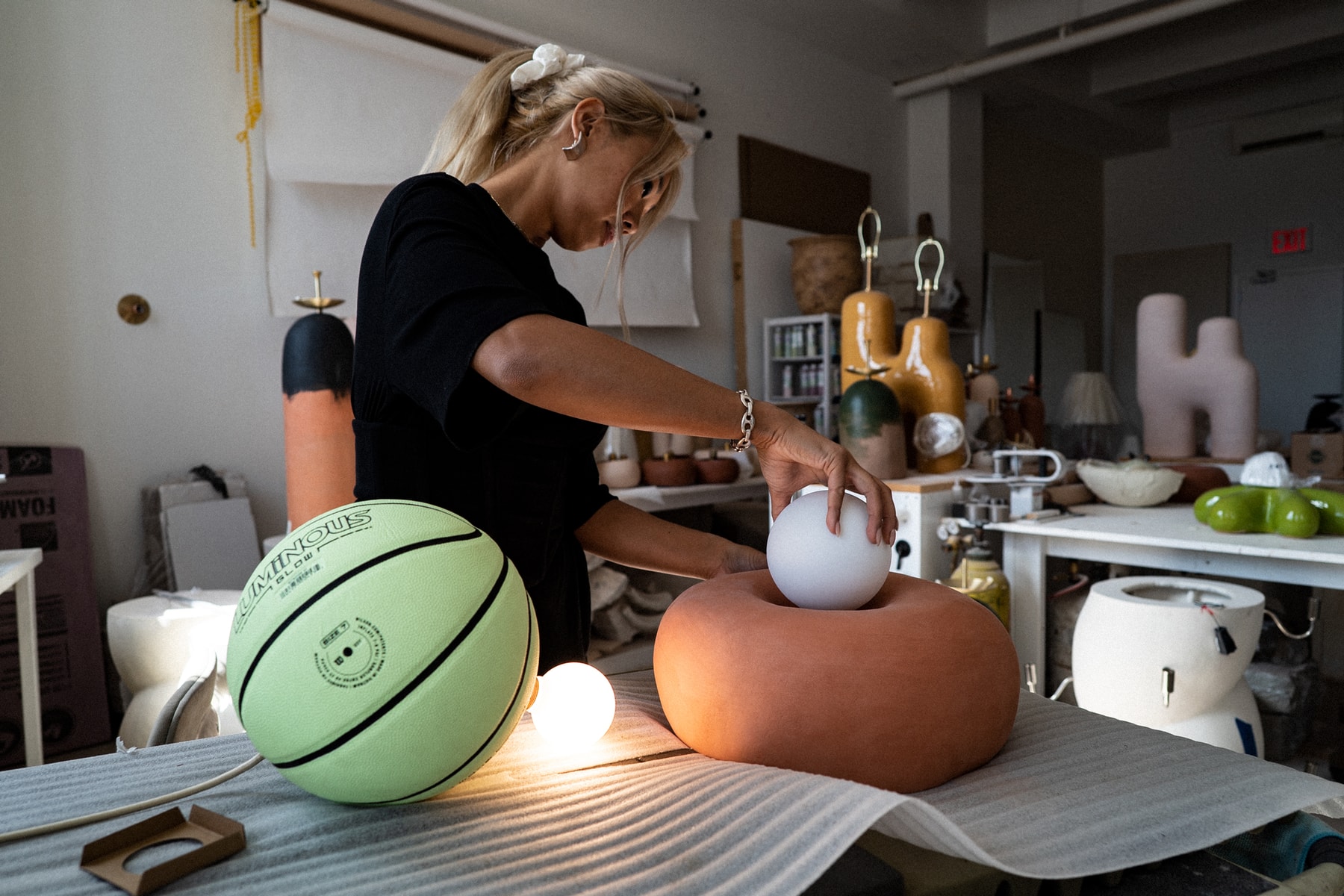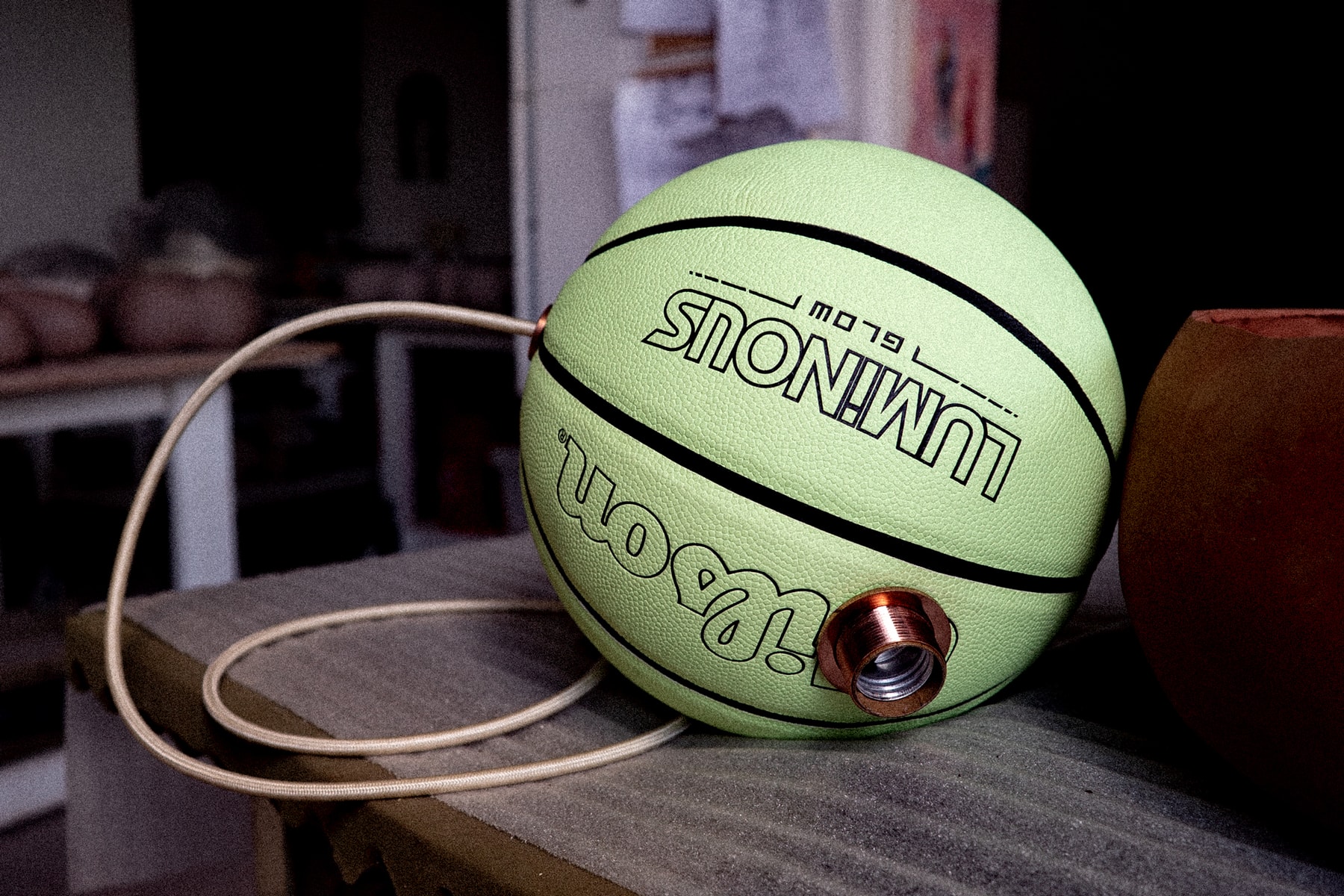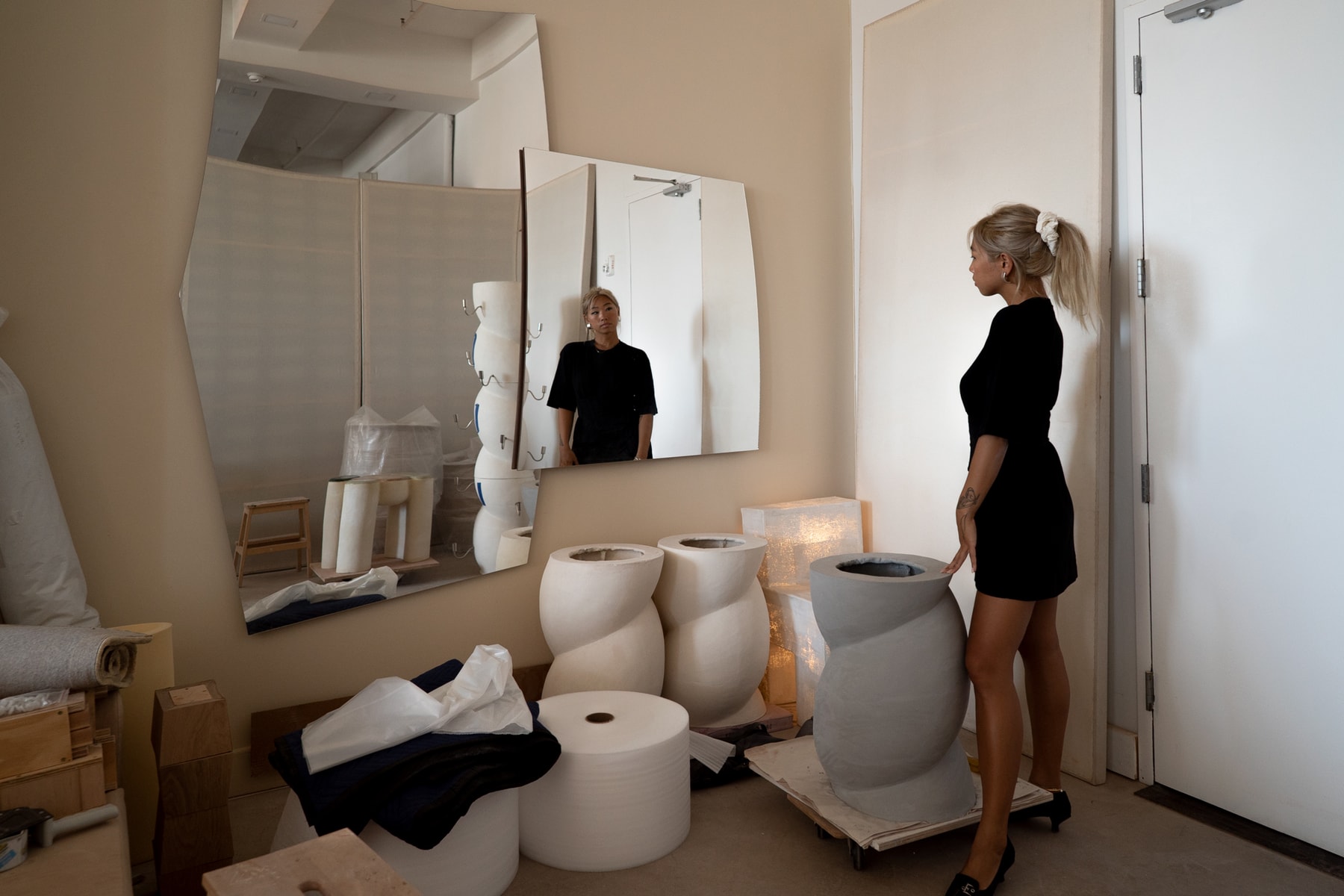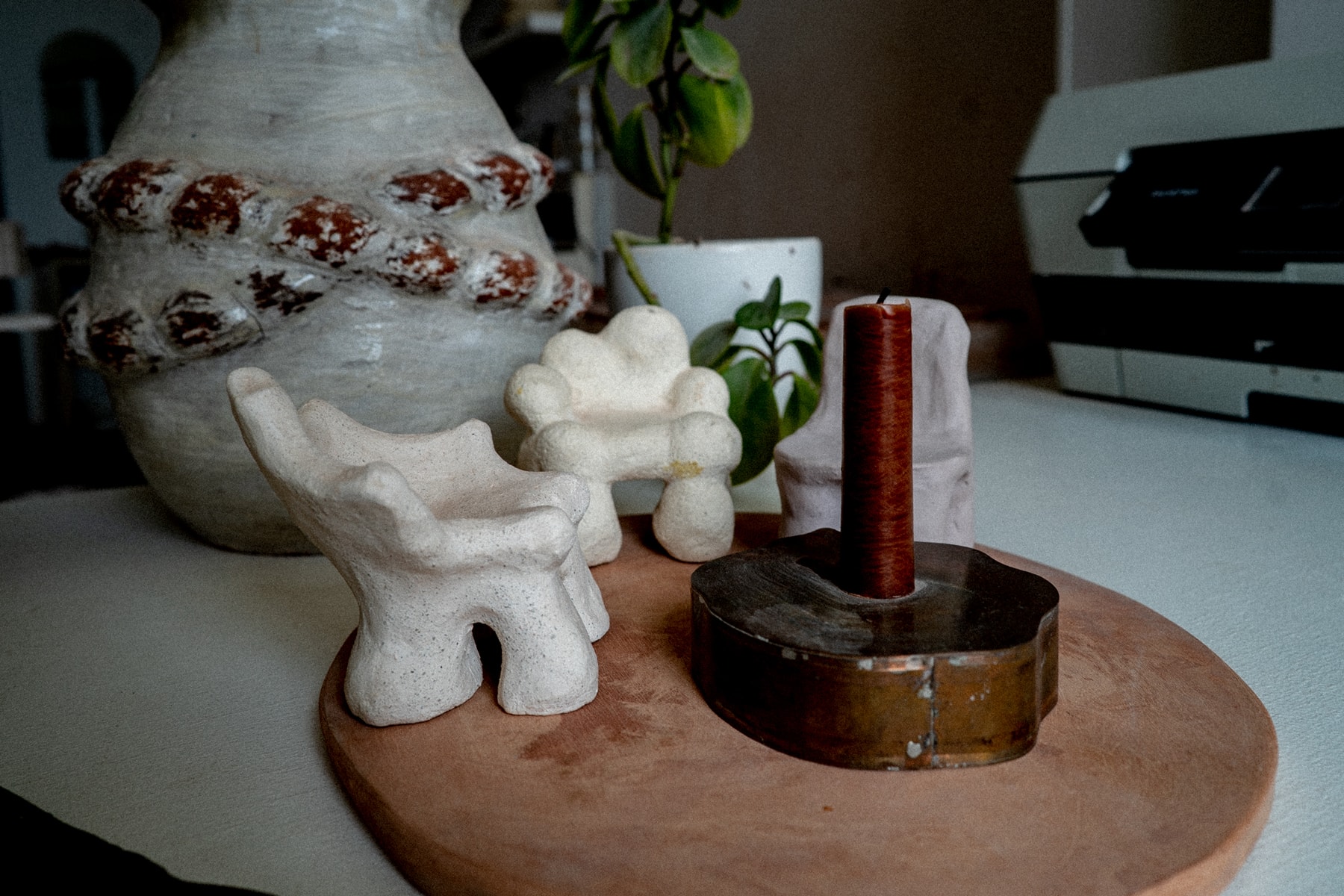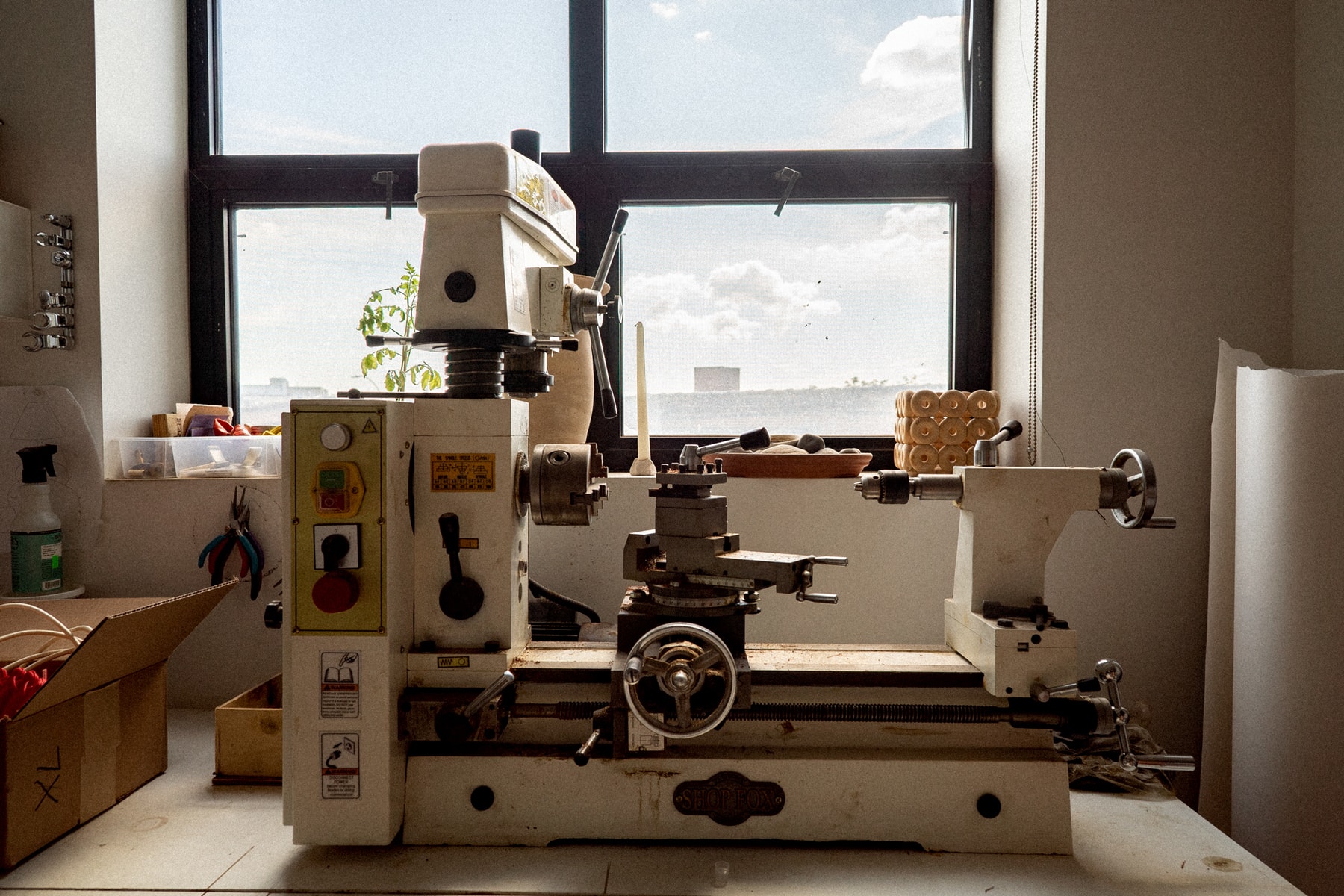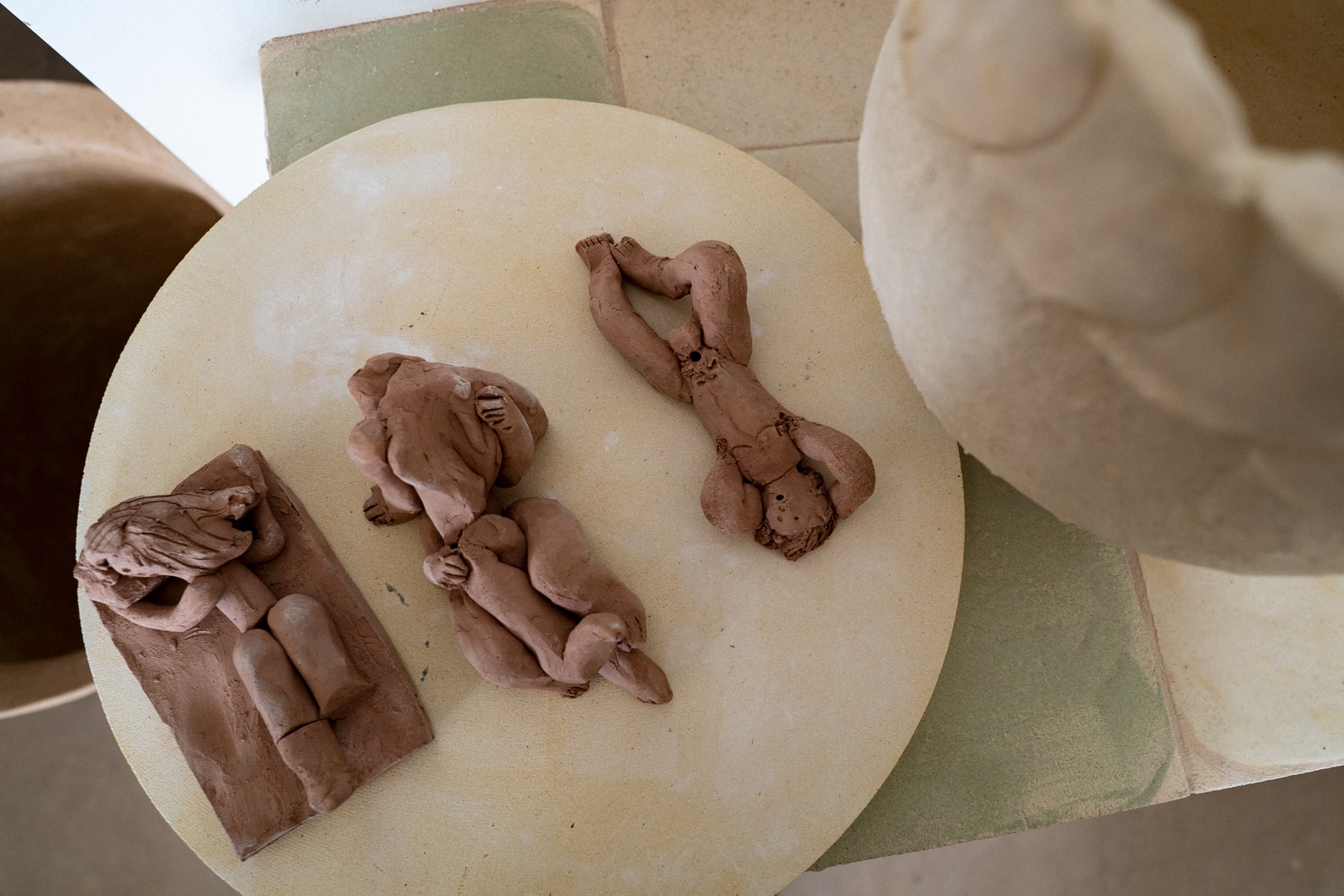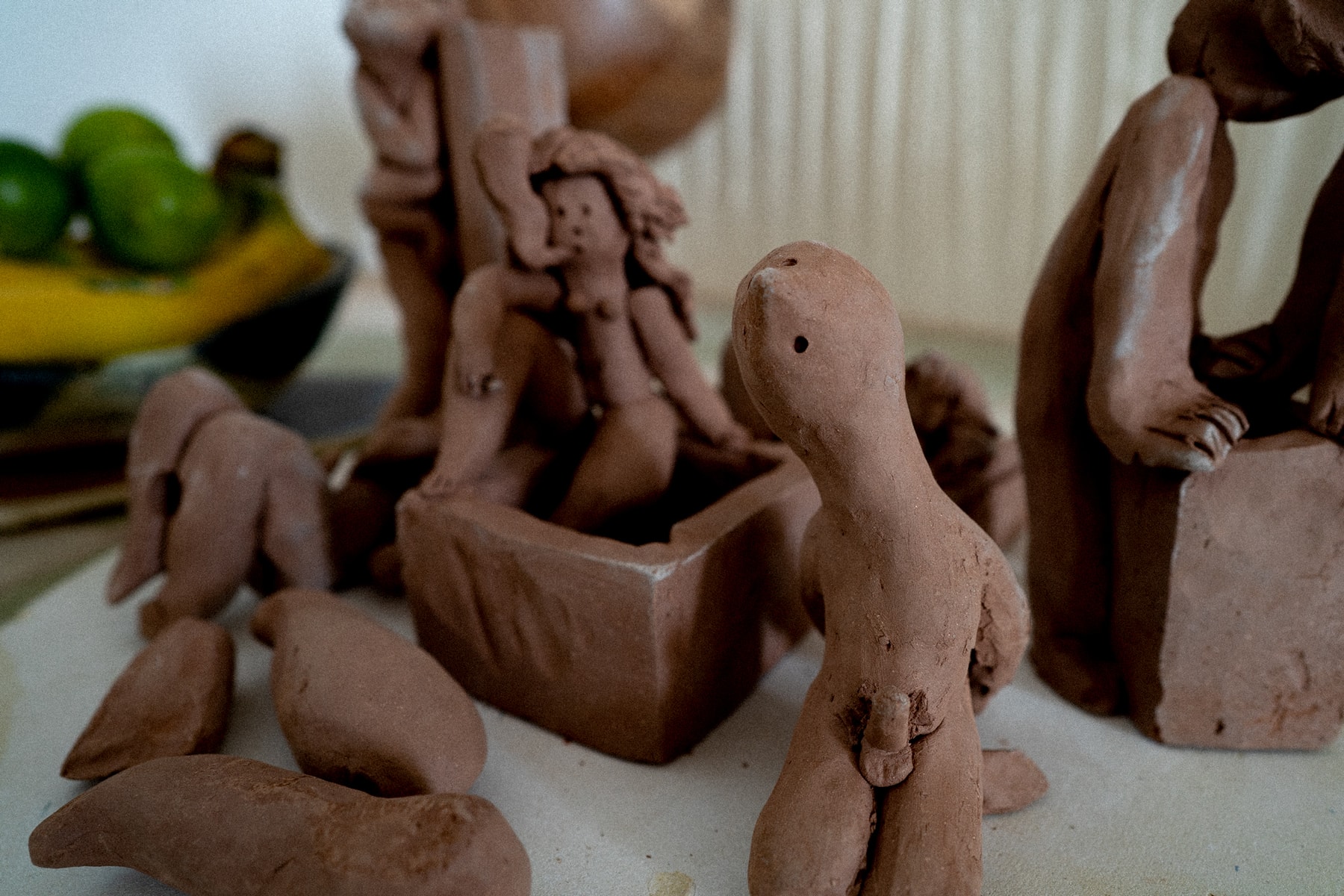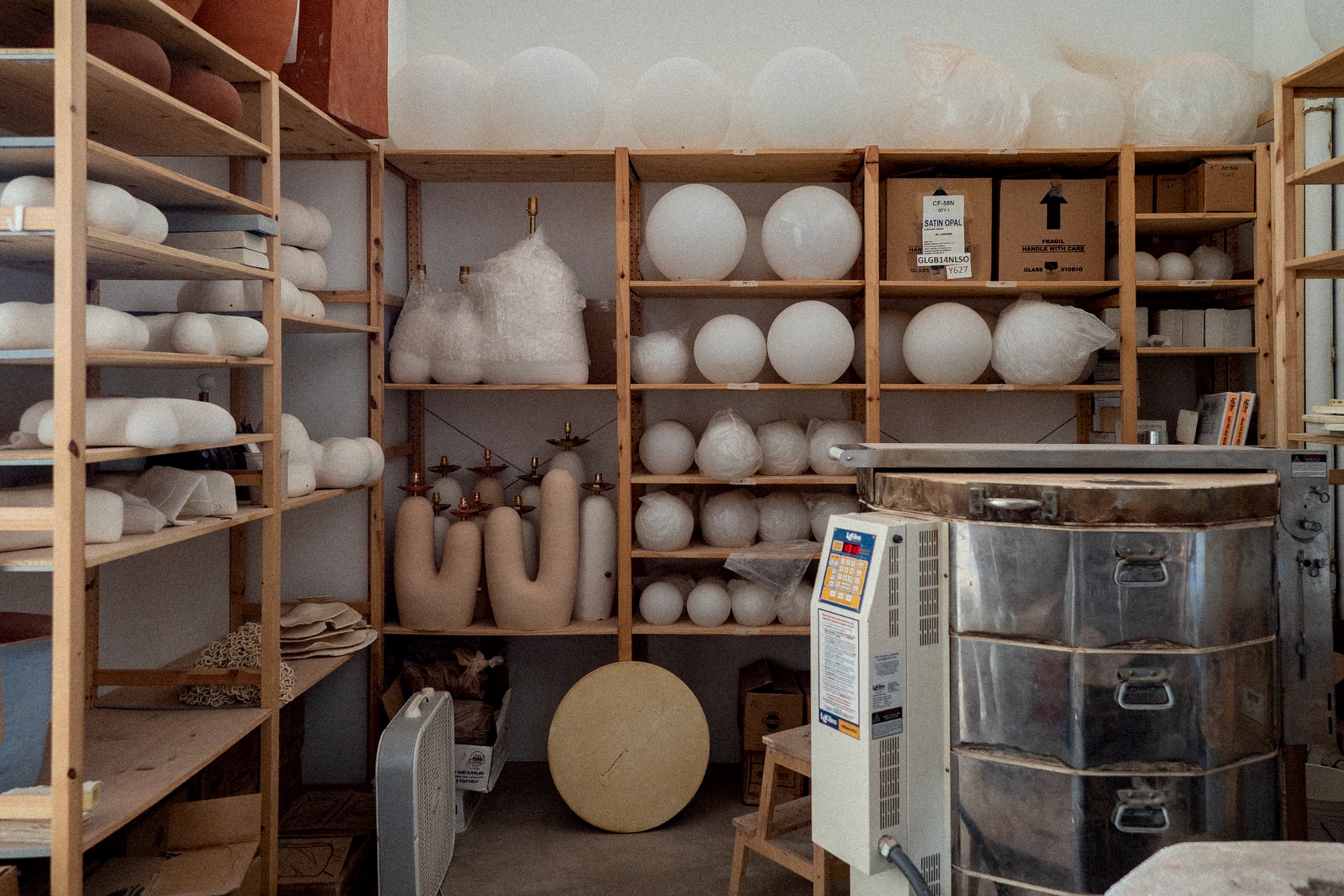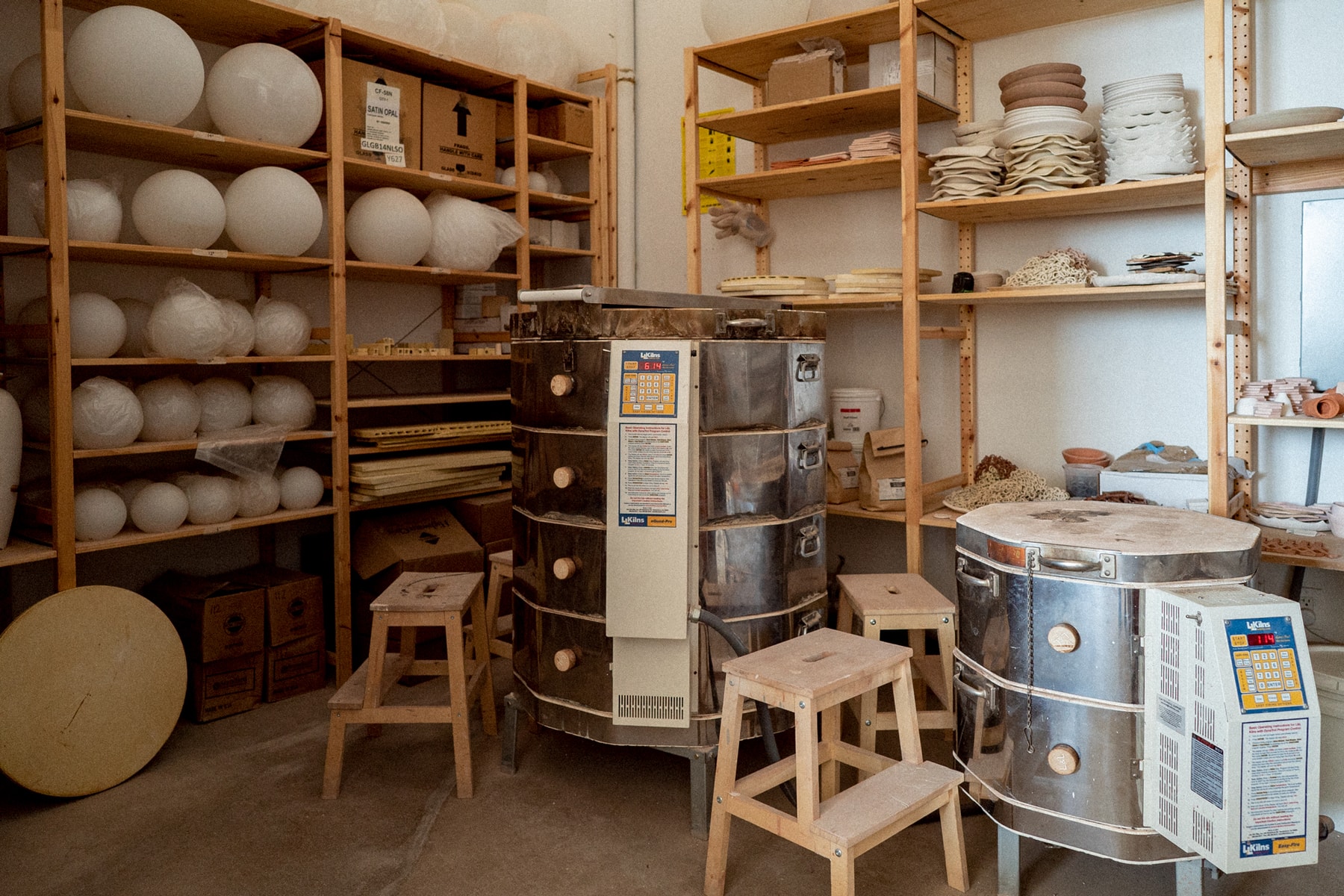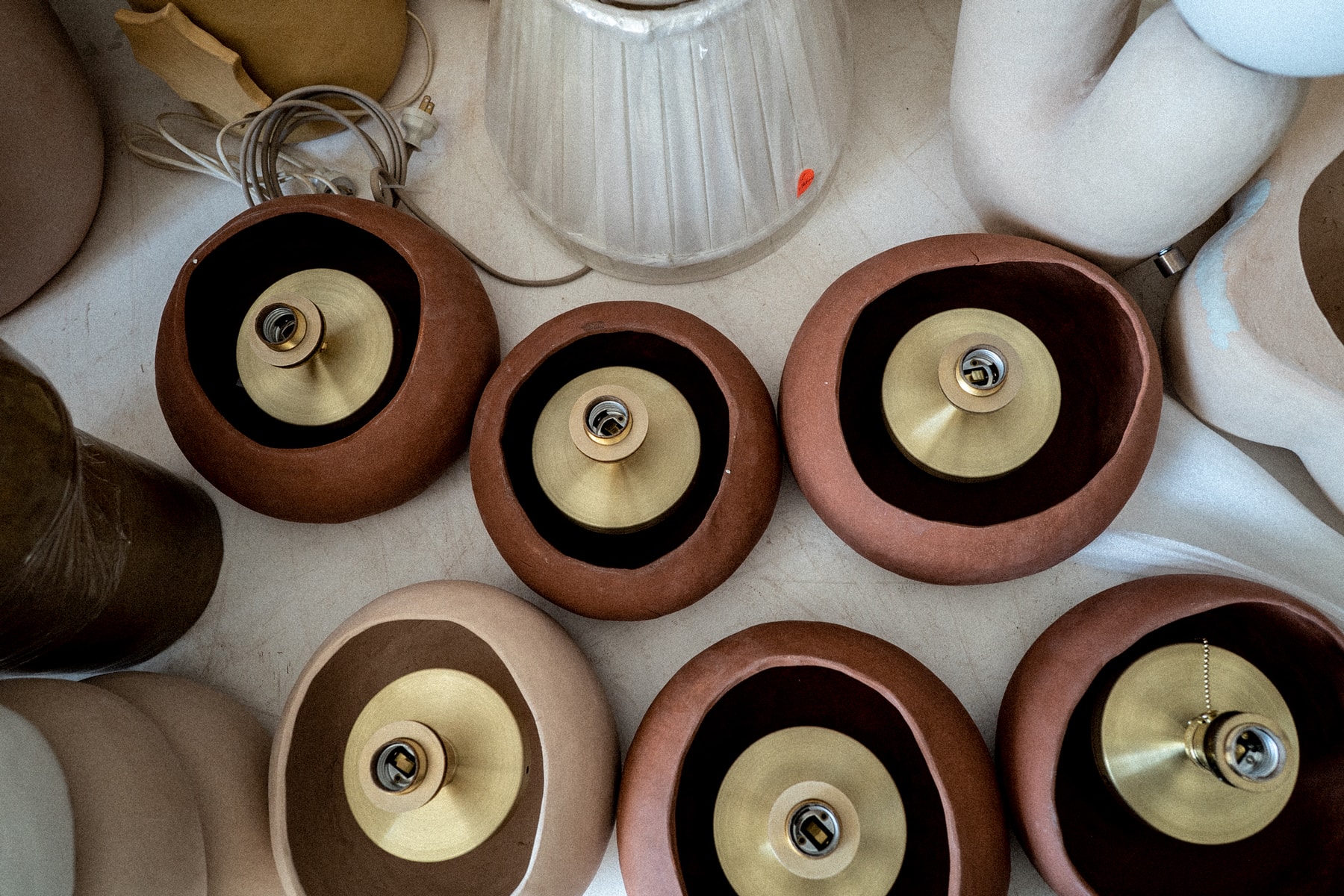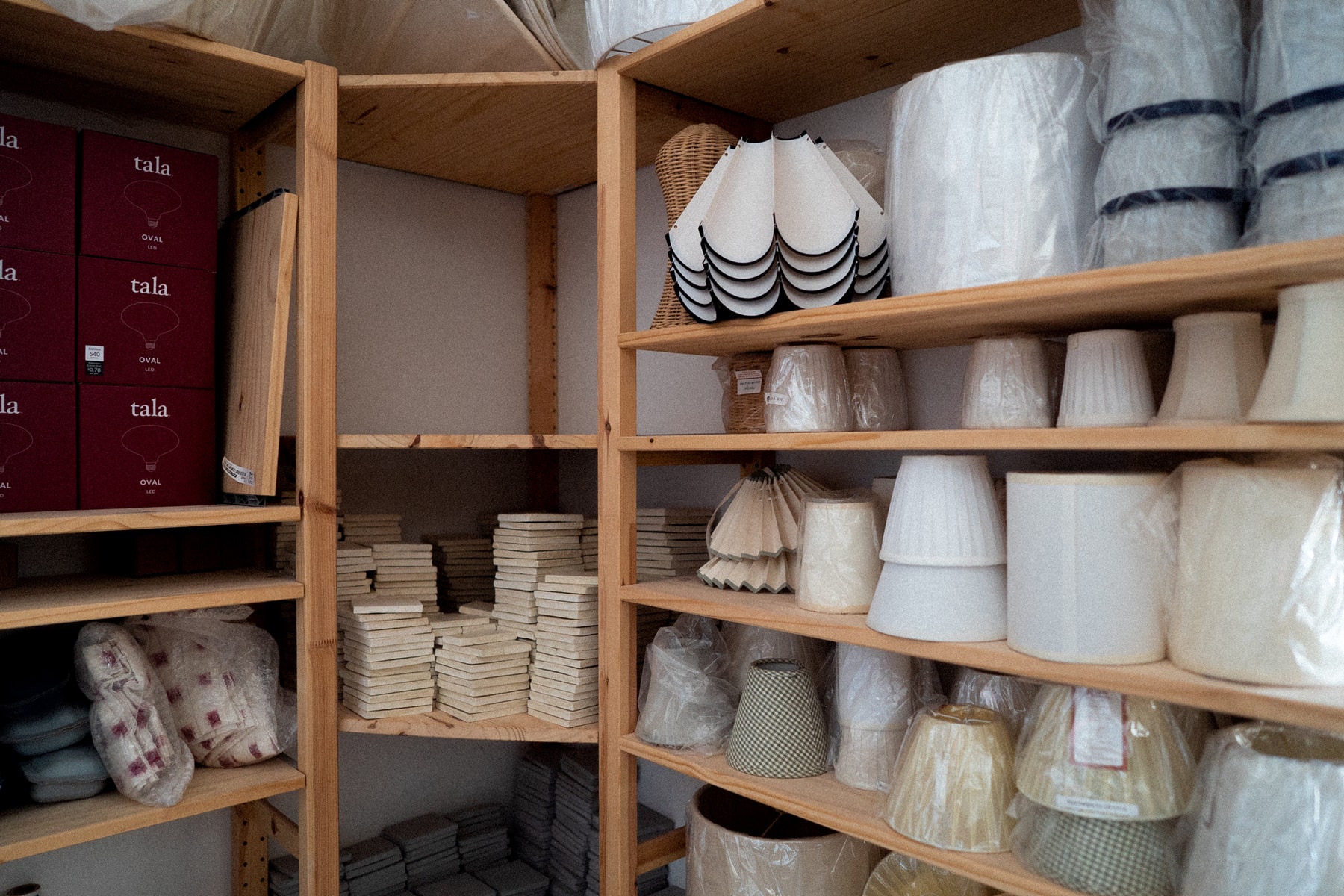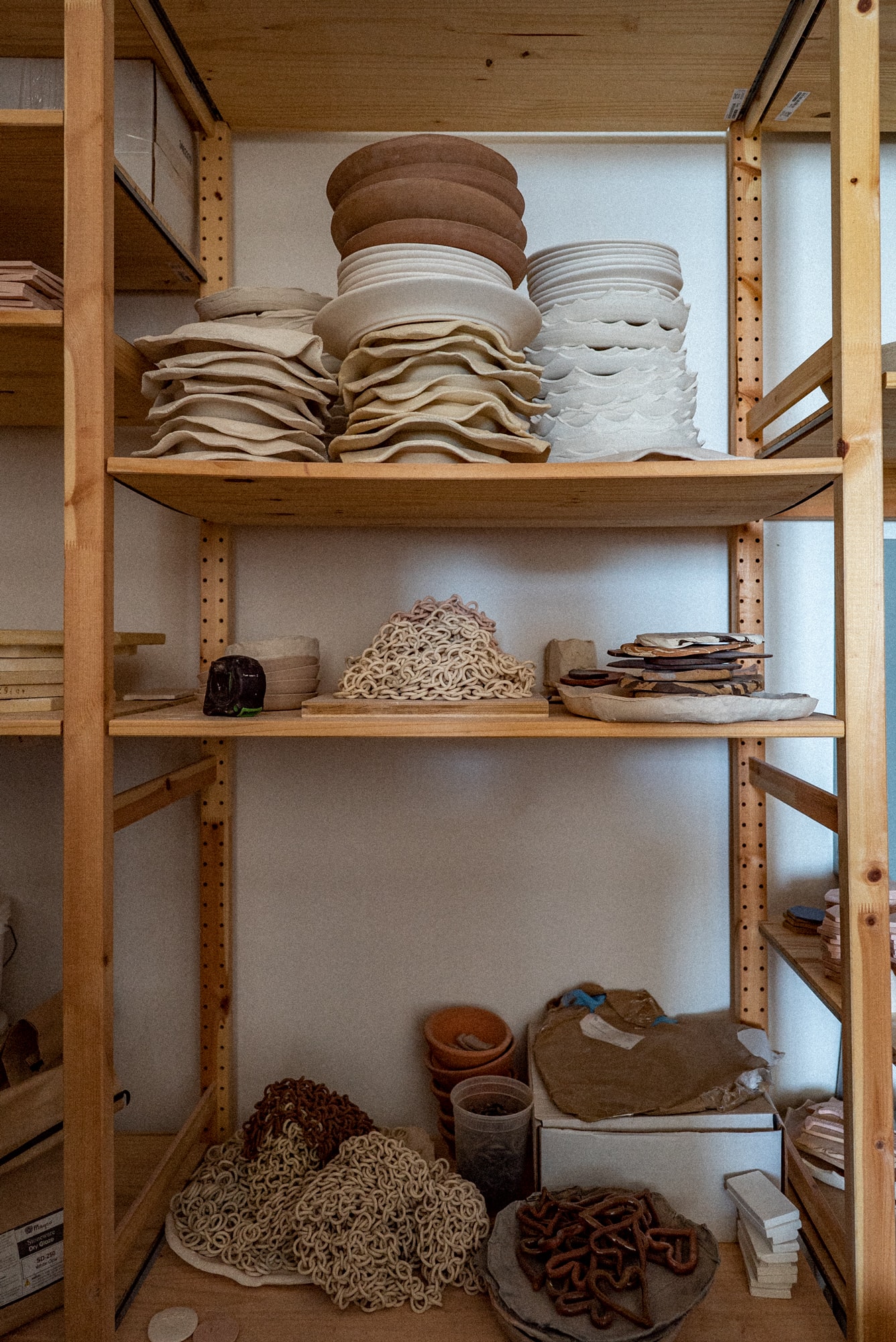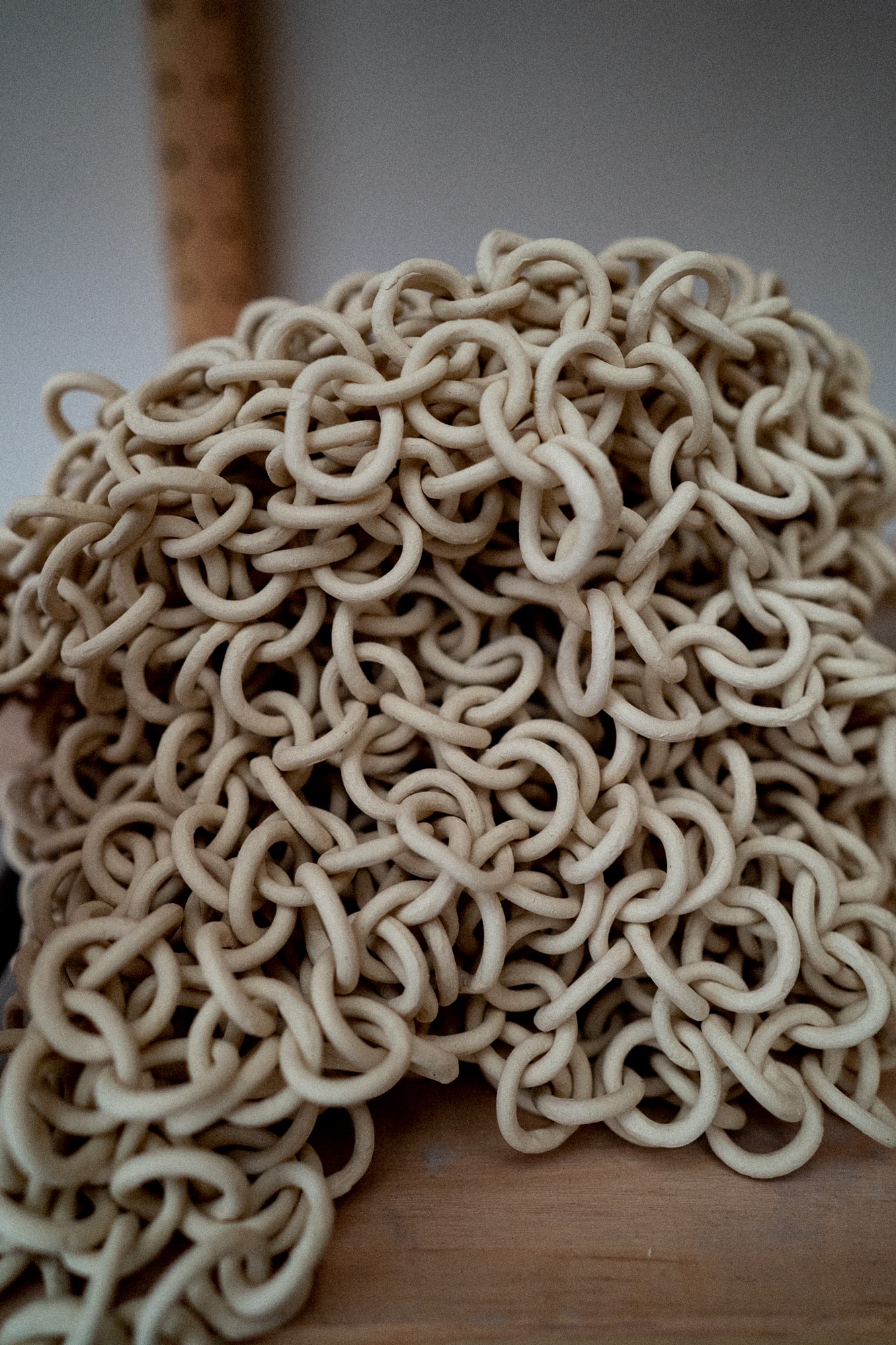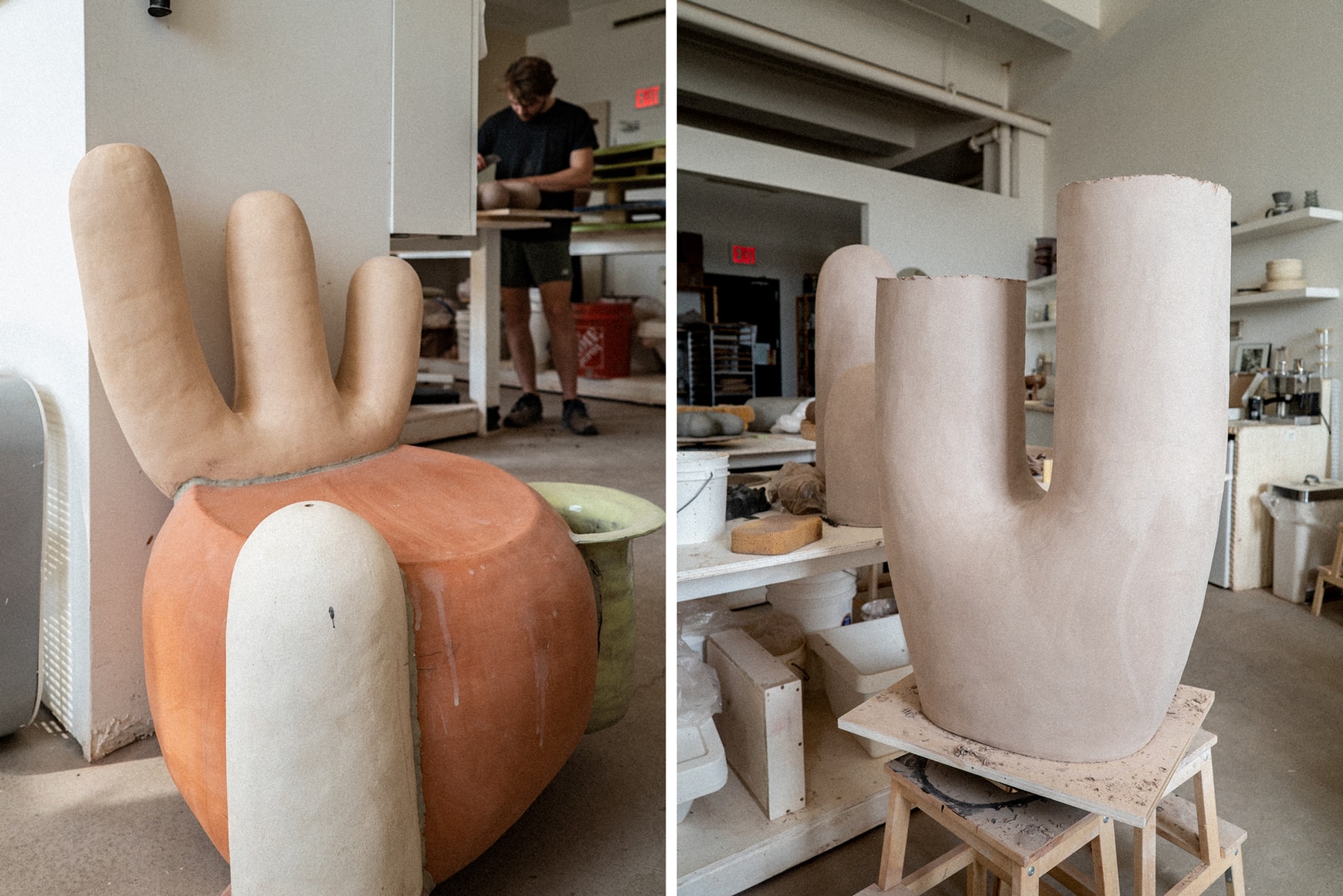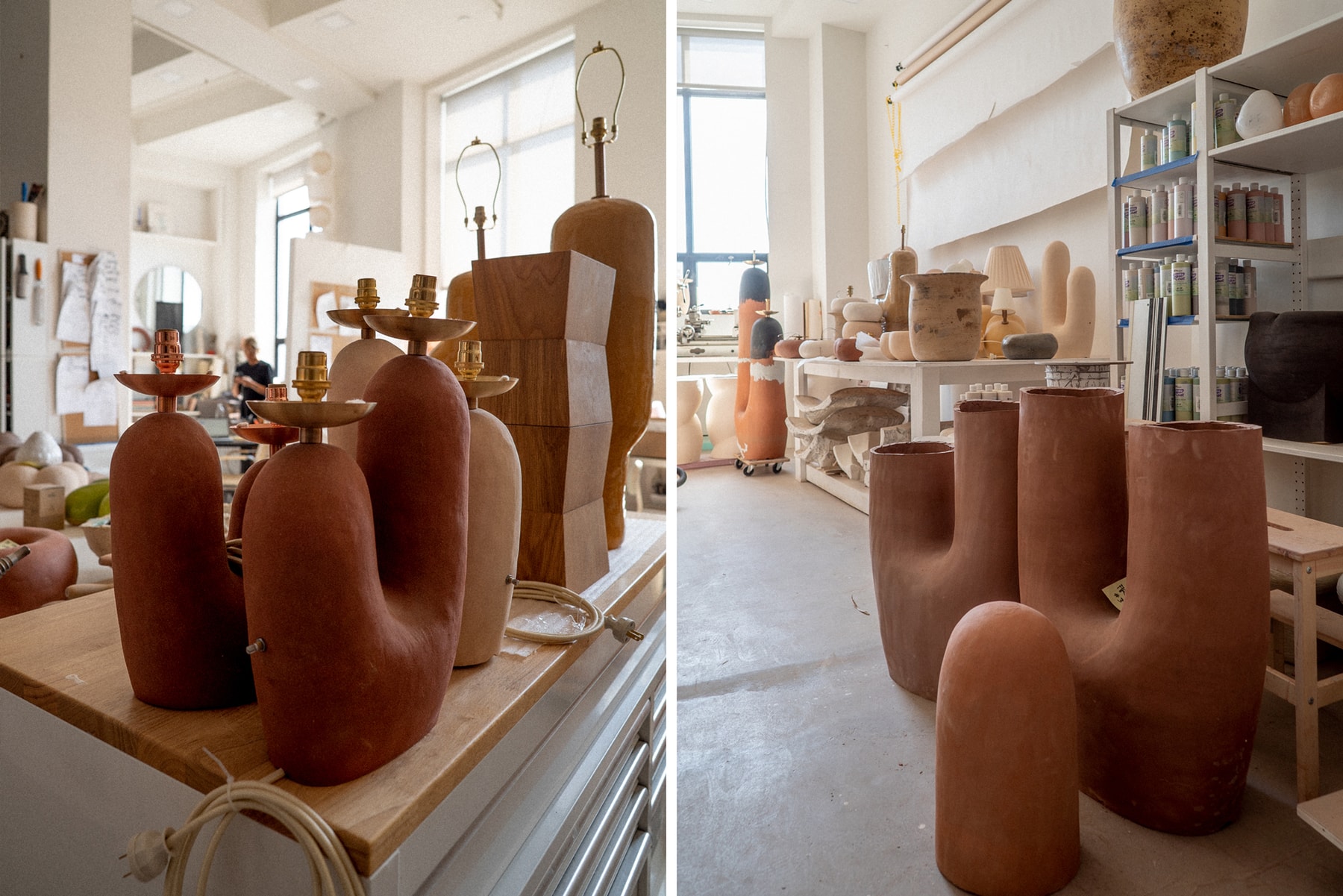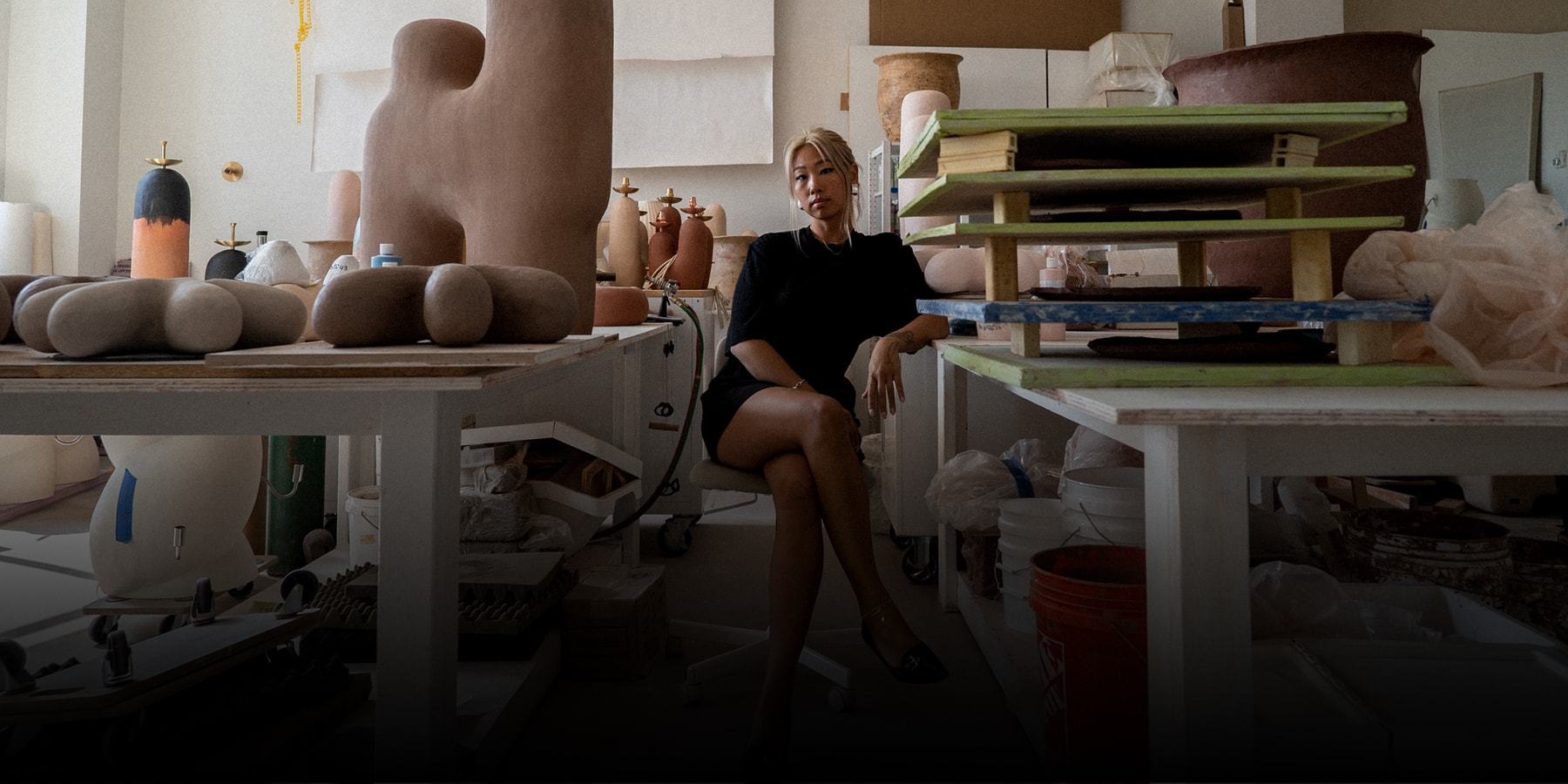
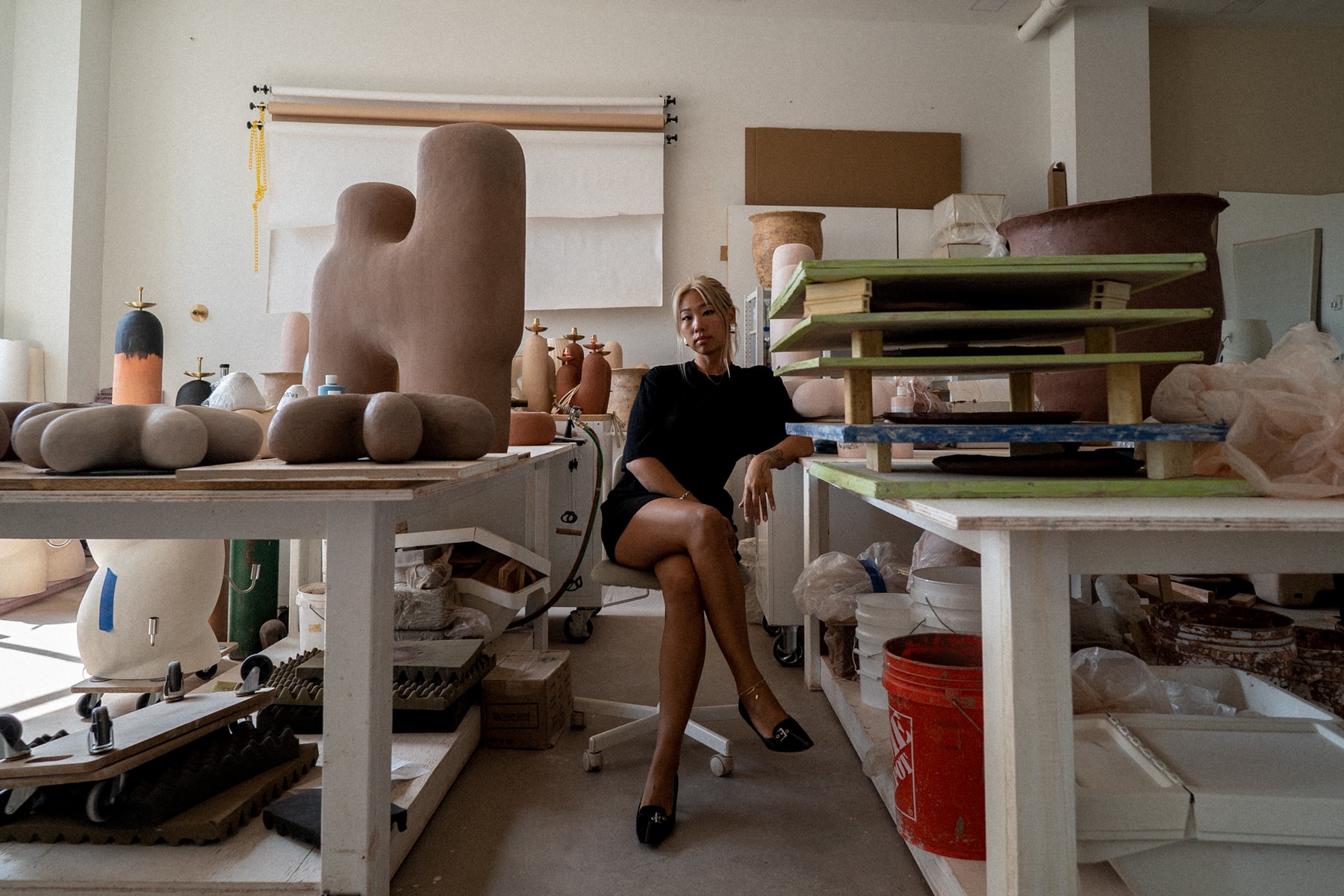
Whether it’s consuming content or engaging in a wide range of services delivered by today’s brilliant technology, society is enamored in an attitude of extraordinary rapidity. One artist is batting an eye to this concept of swiftness and instead, embracing a slow approach when it comes to crafting furniture and sculptural objects. Enter Eny Lee Parker, the Brazilian-born Korean designer who is known for her amorphous and nature-inspired creations spanning daisy-shaped sconces, bouclé stools, as well as unconventional seating that take the form of clouds. In 2017, she founded her namesake studio in Brooklyn, New York where she works with a small team on special collaborations, exhibitions and commercial projects.
Parker’s designer-meets-artist practice recounts the raw beauty of ancient craftspeople whose methods embraced qualities of slowness, intention and respect for natural resources. Oftentimes she meticulously sketches what she wants to create or sculpts clay into miniature figurations that act as models for life-sized objects. Of course, the reality of any business is that deadlines dictate the quality and quantity of production. When it comes to working in tight schedules, Eny doesn’t really put much thought into the conceptual meanings behind the objects that she creates, instead, she focuses on the fun aspects of the creative process with her team and puts their collective efforts into completing the job. “Even though we’re part of the slow movement situation, I just think that there’s not that much time to design,” she says. “I’d sketch something, I was like, ‘What about this?’ It’s in the kiln right now, but it’s basically butterfly wings and there are two side tables that when you put it together, it’s a butterfly. Is there anything that’s life changing about that? Hell, no. But I talked to the team about it and we had fun making it in production.”
Recently, Eny curated her first exhibition called “Sexy” at New York City’s Objective Gallery. It’s the fourth exhibition at the gallery which opened in March as the New York outpost of the Shanghai-based design gallery. The presentation is “not necessarily about sex; it’s about an energy surrounding what we’re attracted to and gravitate toward,” she said in an interview. “People are attracted to different things, and embracing that is important.” Several highlights from the exhibition include squeezable puffer chairs upholstered with recycled down jackets by Seoul-based designer Jinyeong Yeon, drippy silicone vessels that toy with the concept of sex toys by Nicholas Devlin, and alluring reinterpretations of everyday objects such as an Instant Pot by the artist Dong-Ping The show is on view through October 7.
For our latest Studio Visits feature, we met with Eny Lee Parker in her Brooklyn studio to discuss her upbringing, career highlights and the challenges she’s had to overcome in her furniture practice.
“Millennial pink was a vibe, terracotta was a vibe.”
How long have you been in this studio?
I think we’ve been here three years. I was in Bushwick prior to that for just two years. So my business is five years old. I technically started in Savannah. I was doing my thesis and people just assumed that I was a business through social media. I tried doing furniture, working with factories and realized that it was so overwhelming. A lot of cost upfront that I didn’t have. I quit that and told myself, “Okay. I’m going to make clay, ceramic jewelry.” And learned how to create a line sheet, products, a collection, take photos, do wholesale counts and learn how to do returns and exchanges with clients. All of that.
Which really helped, because it was such a small scale, and it gave me a little bit of understanding to scale up into what I do now. But it started in Savannah, and then when I moved to New York, my first year in that studio was all just doing wholesale jewelry. That’s how I started.
What types of jewelry were you making? Are they similar to these forms that you see here?
A little bit. It was six years ago, but it was very basic, ceramic, chain mail. I got lucky because I think that I really started doing ceramics when terracotta was such a big trend and that was seven or eight years ago during my residency.
So that period in your career was a sort of breakthrough moment for you?
Yeah, it definitely was. Millennial pink was a vibe, terracotta was a vibe. Ceramic jewelry was foreign and people started really liking it. I got lucky in that sense. It helped that I also got a small article in the New York Times, the T Magazine, and that really helped put myself out there.
“I needed to take it slow and just do what I could do on my own.”
Tell us about handling that exposure and then navigating that at such an early time in your career.
You have to be ready. Have to have stuff in stock, which I didn’t have anything in stock when it came out. Overall, it’s luck. I was with the right people at the right time. But I think that, looking back, I definitely did not take advantage of it. Because there are companies that get ready, have it in stock and they sell out. None of that happened to me. I just had to literally email everybody back being like, “Sorry, I can’t.” But it was just me too, so I think I’m still okay with how I went. Because it would’ve been too much growth fast and I wasn’t going to be able to handle it.
Tell us about that moment when you transitioned into doing more ceramics, interior design, objects, and furniture making.
My background is interior design and I was doing my master’s in furniture, so I was just designing, posting on Instagram and I got approached by Sight Unseen, it’s a press company. Monica and Jill used to do these trade shows called Offsite. So it’s all this young, furniture designers would come and do a trade show and it was really fun, vibrant. You have to pay, obviously, a fee to rent out the space. They didn’t know I was a student and I didn’t tell them, but I basically told them, “I’m in Savannah. I don’t have five grand. Sorry, I would love to, but I really can’t.” And they partnered me with Levi’s. So Levi’s paid for the space and we did a whole partnership and that’s how they brought me to New York.
What ceramics were you making that they were attracted to?
They were from my residency and they were these huge wheel thrown terracotta vases that I would put a glass on top and people loved that. So there were big vessels. I also had things that I did myself, chairs and a vanity that I did in school. So I designed a whole setting and that hit everybody’s attention because it was millennial pink, terracotta, velvets and big plants. For some reason, it was in every press, everybody loved that image. And I got lucky. I did that and then people started asking me prices. I didn’t know what a trade show was. I was like, “Wait, what?” So I had to make myself get ready for all of that, fast.
I needed to take it slow and just do what I could do on my own. Except I took a project from an architecture company in Canada, in Toronto, they were doing a restaurant. And basically, they hired me to do all their art vessels and their lighting. So that was a huge project that lasted me a year and basically helped me buy my kilns and pay for a studio space in New York. I was transitioning from Savannah. So that was the start of it, which was about six years ago. And again, they also didn’t know I was in school. So I just fake it really hard.
“When you grow up with an immigrant mentality, everything you do you have to give your best and take the opportunity.”
If they knew that you were still in school, would that pose a problem?
100% percent, I think so. Especially commercial projects. I just think that, the fact that I was a student and showed a trade show, the creative director of that company came to the trade show just to make sure to see everything. He met me. Nobody knew I was a student. I looked like I was in business.
Was it just by yourself at that time?
Me and my ex, he was helping a lot. But it was just me in terms of, I didn’t have a team or a production team, it was just me making everything. But I learned so much through that. It took a year. It was a big fancy restaurant. Packed up everything myself. We rented a truck, drove to Toronto. It was just a whole thing back end, which was really helpful in terms of knowing what to expect with vendors and understanding what the process is like. It was a lot of faking, for sure.
At the time, what were your earliest intentions of growing this career compared to now? Do you have a different approach to it?
I don’t think I knew what I was doing, to be honest. I was just going with the flow because that was the opportunity that was at hand and I didn’t want to waste it. I’m and immigrant and come from an immigrant family. I was born and raised in Brazil, grew up with a single mom — the whole shebang. Single mom, immigrant who came here and sacrificed her whole life for me. When you grow up with an immigrant mentality, everything you do you have to give your best and take the opportunity. And at that age you say yes to everything.
“I don’t want to work with miserable people.”
So you really didn’t know that you wanted to start a business, huh?
I never really wanted to start a business. My dream job was to be a furniture designer at Calvin Klein, move to North Carolina or New York and work nine to five, have healthcare and all of that. But I think slowly, I just learned that the furniture industry in New York is so welcoming and open. It was very different from the fashion and art industry.
Yeah. I would not be here if a lot of people weren’t open about the resources, their vendors. There’s not that much competition among smaller furniture designers. So we all become friends through trick shows. I share my fabrics all the time. I share it with people all the time. So today I think that that just really made it easier to have a business, because I didn’t feel like I was running it by myself.
What would you say was the most important skill during the earliest years in your career that made a big impact on your overall practice?
I learned really early on that I knew exactly how to get press. It felt like math to me. Part of running a business, you want to make editorial pieces that have a story, have an angle, and then have a couple basic products that people would actually buy. Because a lot of stuff that is editorial it’s harder to sell. As I was working, I just didn’t have any competitive nature in me. So to be the best designer, to create the best lighting out there wasn’t really the goal. I grew up in an Asian community in Brazil, and as an immigrant, I just felt like it was more important to just have a safe environment at work.
Just to survive.
Yeah. Survive and also have the right people working with me. My mom and I used to say all the time, she worked with a lot of miserable people and a lot of my friends work with miserable people. What’s the point? I don’t want to work with miserable people. I want to make sure that my team is happy, they’re fed and they feel like they are learning and growing because if they’re unhappy, the work is not going to be good.
I want there to be mutual respect and for them to know that… Everybody in my team knows that I’m never going to stop them from getting a better job elsewhere that might pay them well or they’re interested in stuff. As long as I am in the know, this is a place for us to grow as individuals and as artists and there’s always room to be clear about our intentions. I just think that if it wasn’t for them, I’ll be fucked.
“Having the best looking thing is just not one of my priorities.”
What’s a day in the life at your studio look like these days?
I’m barely here. The past year’s been so difficult learning how to navigate this business alone as a single person. But everyone does such an incredible job at doing their part and more. It just feels like this is why I do it. I really come here once a week. Guilty. Usually, my mornings… I have a dog. I’m running errands. I try to do a little bit of work in the morning. I’m a morning person, I wake up really early. Then when I come I try to clean a little bit, but sadly, John and I are just emails all day. I feel like going through Instagram is part of my job. Just stuff that I never thought of. But I think such a big part of my job now is marketing. So working with brands and doing quote, unquote, “influencer stuff”.
It feels right.
Right. And I think that that’s what makes it worth it. As long as it’s about the people, it feels like I’m accomplishing something.
And it’s purposeful.
Yeah. Because if it was about being the best designer or the best lighting, I would go crazy. My ego, my self worth would be so reliant on other people’s opinions. There’s always a fresher perspective, younger people who are talented, why do I want to compete with that? I don’t need that type of energy in my life. I just want to make sure my mom is supported and then I have to buy a house. My team is happy. And my friends feel like I’m there for them and I have time to have dinners, hang out and be part of the community. There’s so many great things in life that we can focus our energy on. Having the best looking thing is just not one of my priorities. It’s fun, but at the end of the day we’re selling lighting that looks like a flower. It’s not that serious.
“I’ll be the first one to say: ‘I’ll take rich people’s money and put it where it needs to go.’”
So are you now encountering internal questions like “Am I doing this because I like it”? Or is there some outward pressure at all?
It is just funny because there’s that true artist, I think they have a voice and they want to share something that’s really meaningful for them. I’m between that line in the design world. In school, when I was doing my thesis, my whole thesis was about the concept of time and how, because we’re in this instant gratification society, what it’s like to make pieces that take three months and how do we sell to clients and share and educate people that it is important to invest in things that you want and want to keep for a long time, versus buy something and throw away in a year or two.
So, what’s your approach to designing furniture or lighting now?
It’s supposed to be a bonus and additive in people’s homes and projects. I know that it’s not going to save lives. It’s not going to change your political view. I appreciate our clients because when they’re working with us, you are helping pay for my team, you are allowing us to do what we do and you’re allowing us to trickle down the money to the local economy. We work with vendors who are in New York except for rugs, which are in India. So I think that it’s really healthy, when you’re buying from a small business, even though the price point is so high. I’ll be the first one to say, I’ll take rich people’s money and put it where it needs to go. I don’t really take it that seriously. I want to have fun with it.
Can you talk about the sources of inspiration behind your current objects right now?
The current collection that we were originally working on is called “Soft and Sensitive.” It’s just an ironic situation where our materials are ceramic and glass and they’re fragile, but there is something sensitive about it. The shapes that we make are very soft looking. It’s a lot of playing with forms that look like they repel you and then some that don’t. Again, it’s nothing crazy. I think that is just marrying some materials that don’t really belong together. That’s the concept we’re working on.
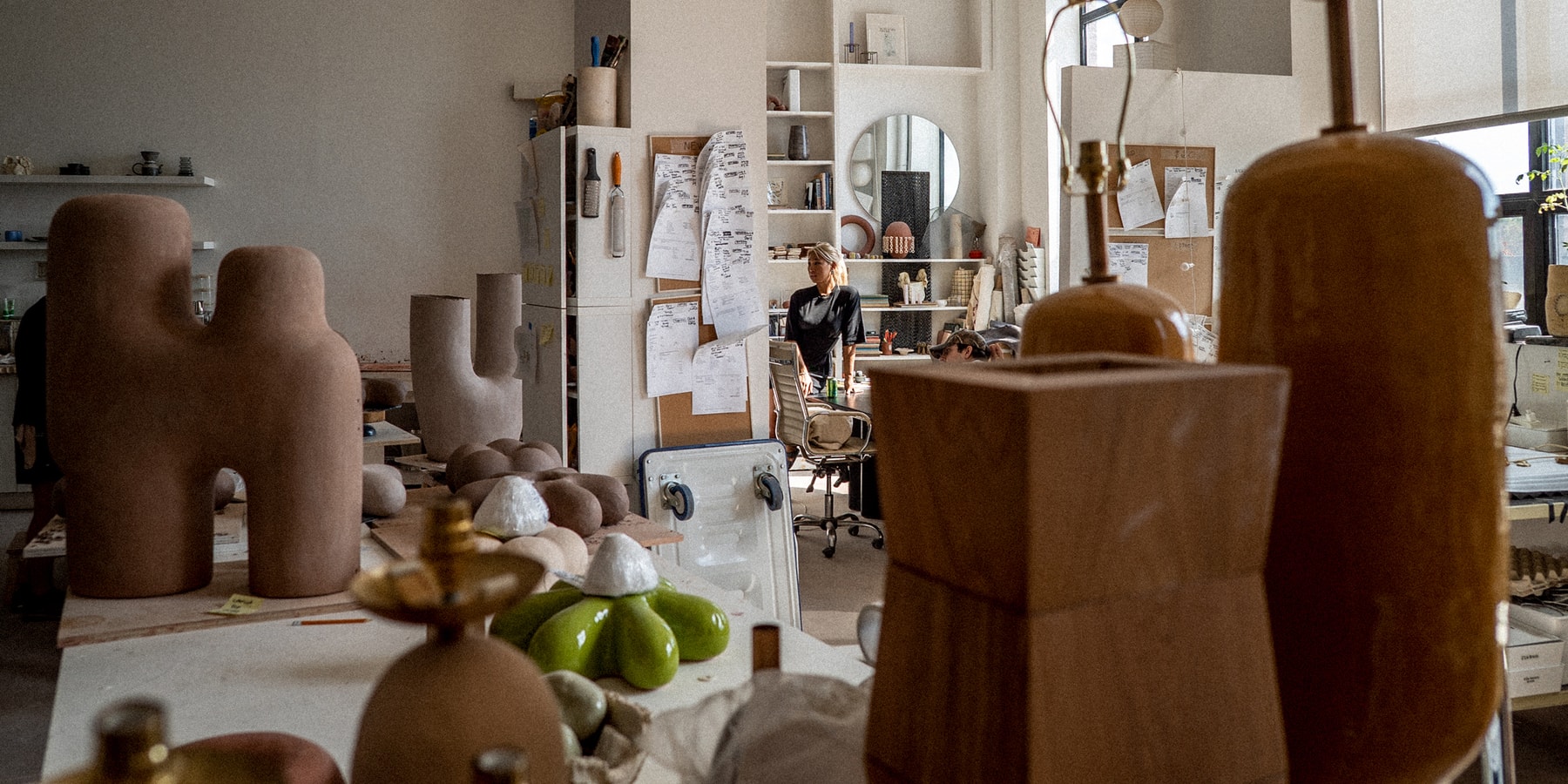
“The hard part of anything is the production.”
What’s the biggest challenge you encounter during your creative process?
The hard part of anything is the production. Even if I make it something and it looks very simple, once we start to tackle the production of it, that’s when the science comes in and I love that. I love the challenges of, “Oh shit, we have to hand stitch this part.” And my vendors are at me because it’s too hard. And they get to learn something and we learn a lot. That part is really fun.
I think running a business is becoming a little more fluent for me. But I think it helps that my team is so good at what they do… John is so good at emails and remembering things, which I don’t remember a lot of. Sorin is so good at just production and talking to people, and he’s so good at showing everybody how to make things. They’re so efficient. Trying to create outlets that bring us passive income.
Do you want to talk about your most recent show?
The “Sexy” show? So that’s at the Objective Gallery which is open to the public until October 7. My friend Chris Shall, he started a gallery a year ago in Shanghai, it’s going really well. Him and Marc Jabara opened an incredible space in the Soho, Tribeca area. It’s an incredible space. And somehow I talked him into letting me curate a show. So we have a really cute roster of people. And the top of the show is called “Sexy”. Again, it was supposed to be super lighthearted. It was the hottest month of the year in New York City when everybody’s in Italy or the Hamptons.
Photography by Keith Estiler for HypeArt
